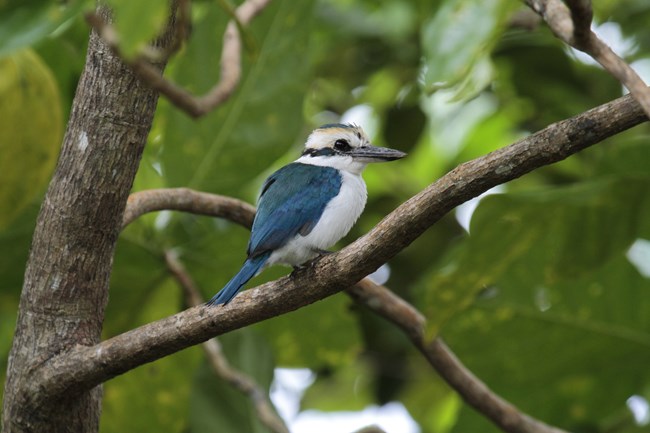
NPS Photo/D. George
Description and Rationale
Empowered by flight, birds typically out-distance other animals in their ability to reach and colonize islands. Largely free from the factors that limit bird populations on continents, the Pacific islands were bird havens composed overwhelmingly of endemic species. Two characteristics of island bird communities are that population densities were, and often still are, much higher than on continents, and that island birds have lost some defenses to disease and predators.
From their position at the top of the terrestrial food chain, birds more strongly influence ecological processes as consumers, pollinators, and seed dispersers on islands compared to the role of birds on continents. On Pacific islands, birds pollinate the majority of woody plant species and disperse their seeds. The native forests of Hawai‘i Volcanoes National Park, Haleakalā National Park, and the National Park of American Samoa harbor some of the last of these fragile bird communities.
Monitoring Objectives
- Determine the distribution and density of all non-threatened native and most non-native landbird species.
- Determine the distribution and estimate reproductive success and annual survival for birds of special interest, including threatened and endangered species, species of concern, and species that require more precise monitoring than is provided by count surveys.
- Document all observations of rare or elusive birds, or newly arrived invasive bird species.
- Monitor the changes in population abundance and species composition of native and non-native forest passerine species relative to management actions corresponding to forest restoration (e.g., alien plant and animal control) and reforestation.
Last updated: December 21, 2023
